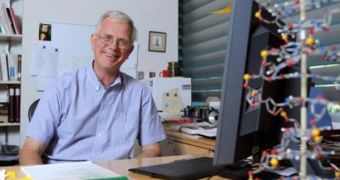According to experts at the Arizona State University (ASU), carbon nanotubes (CNT) could be used to set the basis of a brand-new, extremely fast method of sequencing DNA. At this point, this process is very cumbersome and cost-prohibitive, and research groups around the world have been working on new methods of accomplishing the same objective for a long time. The ASU approach is basic in conception, but holds a lot of promise, experts believe.
In the new technology, its creators say, a single-stranded ribbon of DNA is made to pass through a hallow carbon nanotube. As it does so, the strand produces voltage spikes, which can be recorded, and then matched to specific base pairs. This process is known as translocation. In addition to being used in fields such as nanotechnology, electronics, optics and materials science, CNT could soon innovate medicine as well. Having the ability to sequence one's DNA fast and cheaply could mean the difference between life and death for many people in the near future, the ASU team believes.
The group also reveals that the single-walled carbon nanotubes used in its research are very narrow, measuring no more than one-two nanometers in diameter. It also says that the tubes were grown from an oxidized silicon wafer. Because the control of nanopore characteristics is easier and more reliable in nanotubes, the materials undoubtedly constitute a very promising alternative to all other chemicals or approaches that may be on the table at this point. The ASU team believes that an accurate and minute control of DNA translocation is the key to a successful sequencing technique.
It plans to accelerate the method it devised even further, so as to make detection faster overall. However, it needs to figure out how to pass the DNA sample through the nanotube faster, while at the same time leaving the detectors enough time to record the trace voltage spikes that the genetic material leaves behind as it slides through. While this is indeed very difficult to accomplish, the team believes that a breakthrough with this work could result in DNA sequencing methods thousands of times faster than the existing ones, all at only a fraction of the cost.

 14 DAY TRIAL //
14 DAY TRIAL //